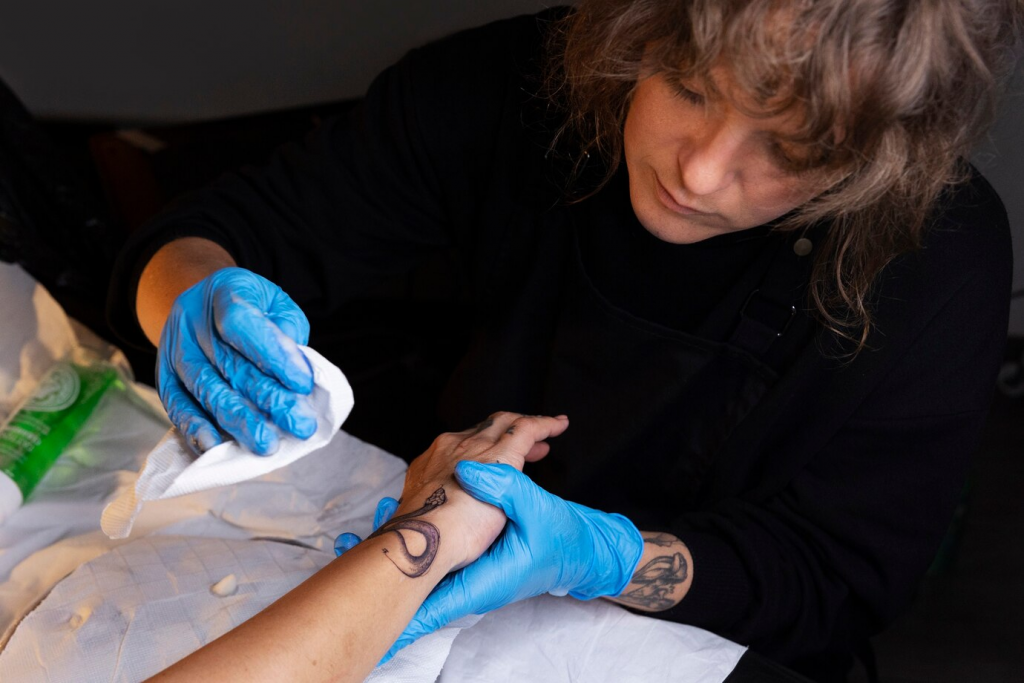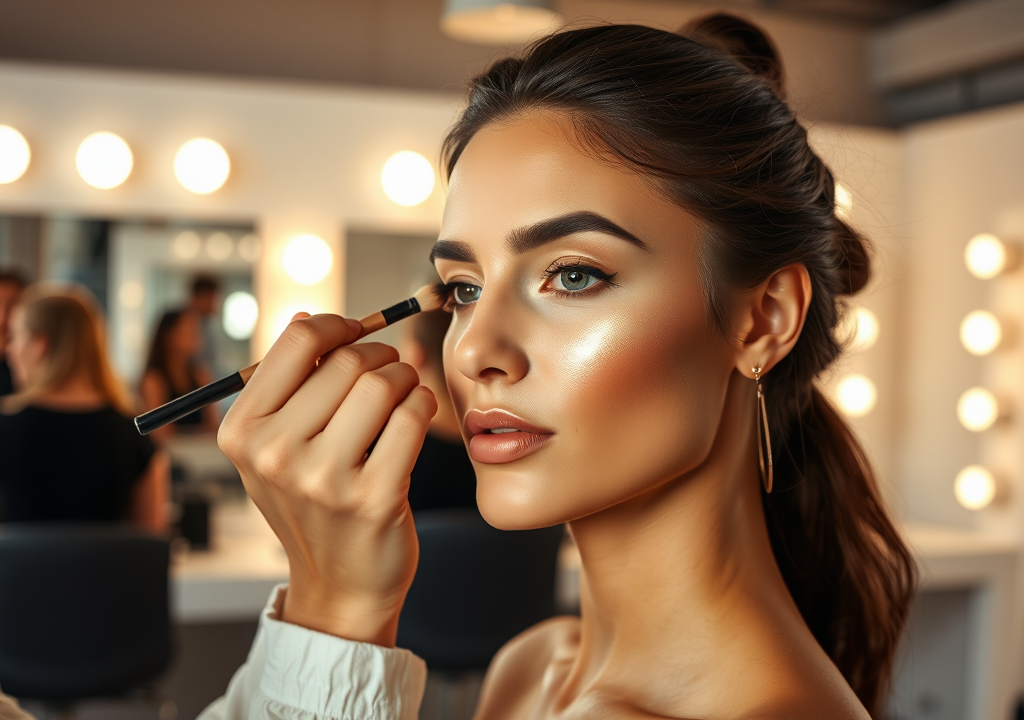When it comes to adorning your body with art, incorporating scars into a tattoo design can be both a form of expression and healing. However, before you embark on this journey, it is critical to recognize that patience is a virtue. The main question of our article, “”How long should I wait to tattoo over a scar?”” depends largely on the scar’s age, type, and healing stage. Generally, it is advisable to wait at least one to two years before tattooing over a scar. This time allows the scar to fully heal and for any discoloration to stabilize, ensuring your tattoo looks its best and reduces the risk of further damage to the skin.
Understanding Scars and Healing
Scars are a natural part of the healing process, marking the spot where your skin has repaired itself after an injury. The formation of scar tissue involves a complex biological sequence of events, with the body working diligently to mend the wounded area. When the deep layer of skin, the dermis, is damaged, the body forms new collagen fibers to mend the damage, resulting in a scar. This new scar tissue will have a different texture and quality than the surrounding tissue.
Not all scars are created equal. They can be categorized into several types:
- Hypertrophic Scars – These are raised, red scars that stay within the boundary of the original injury.
- Keloid Scars – Keloids are similar to hypertrophic scars but can grow beyond the original injury site.
- Atrophic Scars – Atrophic scars are sunken and pitted, often a result of acne or other skin conditions.

Considerations Before Tattooing Over a Scar
Prior to making the decision to get a tattoo, assessing the maturity of the scar is crucial. Mature scars are paler, flatter, and generally less sensitive as compared to their newer counterpart. This maturity means that they are less likely to change over time, which is ideal for tattooing. Skin elasticity and color around the scar also play significant roles in how well the tattoo ink will hold and appear on the body.
Consulting with professionals cannot be overstressed:
- A dermatologist can provide an assessment of the scar’s condition and advise on any medical considerations to take into account.
- A professional tattoo artist experienced in working with scarred skin can evaluate the feasibility of tattooing over your specific scar.
The Tattooing Process on Scarred Skin
Tattooing scarred skin isn’t the same as tattooing unblemished skin. Tattoo artists might use special techniques for scar coverage, such as adjusting the needle depth or angle to ensure the ink is deposited evenly. This is important because ink retention could vary across scar tissue compared to normal skin, with some areas potentially taking on more ink than others.
Aftercare for tattoos on scar tissue might necessitate a more gentle approach. It’s common to expect a bit longer healing time and you may be advised to use certain types of ointments or creams.
| Consideration | Normal Skin | Scarred Skin |
|---|---|---|
| Needle Depth and Angle | Standard | Adjusted |
| Ink Retention | Predictable | May Vary |
| Healing Time | Average | Potentially Longer |
| Aftercare | Standard Routine | Specialized Requirements |

Optimal Timing for Tattooing Over a Scar
The optimal timing for tattooing over a scar can be summarialized through the following general guidelines:
- For hypertrophic and keloid scars, waiting at least one to two years is advisable to ensure they are fully stabilized.
- For atrophic scars, the timeline can vary depending on their severity and the response to treatment if any is undertaken.
However, this is assessed on a case-by-case basis and can be flexible based on the individual scar and person. Patience here is not just a virtue but a necessity for guaranteeing the tattoo’s longevity and aesthetics.
Selecting the Right Tattoo Design
Selecting the right design for tattooing over a scar is not just about aesthetics but also about practicality. The design can work to camouflage the scar, incorporating it into artwork in a way that it becomes part of the design’s narrative. For example, a linear scar might be efficiently hidden within the stem of a flower or the edge of a sword in a larger graphic piece. When considering designs for scar cover-ups, simplicity might not always be your friend; complexity in pattern and color variation can be a strategic choice.
The significance of placement and size also comes into play. Larger tattoos may cover the scar more effectively, but it’s essential to balance this with your comfort and the visibility you want for the tattoo. Factors to consider include:
- How the design will wrap around body contours or move with muscle.
- Whether the tattoo fits harmoniously with any existing tattoos or natural body symmetry.
Legal and Health Considerations
When tattooing over a scar, it’s important to be aware of the legal and health implications. Most reputable tattoo studios will require you to sign an informed consent form, acknowledging the risks associated with tattooing scarred skin. This might include potential complications like infection, poor healing, and the possibility of the scar’s appearance altering over time.
The risks and possible complications are not to be taken lightly. Here’s what you should be aware of:
- Increased risk of infection due to the altered skin texture.
- Changes in scar tissue response which could lead to unexpected tattoo outcomes.

Conclusion
In conclusion, tattooing over a scar requires a considerable amount of planning and waiting. The time to wait before getting a tattoo over a scar can vary from one to two years to ensure that the scar is fully healed and stable. Choosing the right design and understanding the potential risks are also paramount. By doing so, you can create a piece of art that not only enhances your body’s appearance but also has the potential to transform your relationship with your scar.
Frequently Asked Questions
Can I tattoo over a scar that is less than a year old?
While it is technically possible, it’s not recommended to tattoo over a scar that’s less than a year old because the scar is still going through changes and might not yield the best tattoo results.
Do tattoos on scars hurt more than on regular skin?
Pain is subjective, but tattooing over scar tissue may be more sensitive for some because the nerve endings can be different than in unaffected skin.
Will a tattoo over my scar hide it completely?
A tattoo can camouflage a scar to some degree depending on the skill of the artist and the design, but it may not hide it completely; it’s about turning the scar into something beautiful.
What happens to the tattoo if my scar changes over time?
If a scar changes over time after being tattooed, this can alter the appearance of the tattoo. It might require touch-ups or even changes in the design.
Should I see a dermatologist before getting a tattoo over my scar?
Yes, consulting with a dermatologist is advisable to assess the condition of your scar and discuss any potential risks related to tattooing over it.





